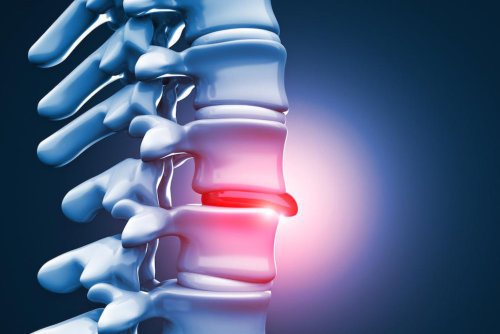The bones that make up your spine are called vertebrae. Between each vertebrae, in the spinal canal, there’s a small, round disc that provides cushioning. These discs serve as shock absorbers and are amazingly tough.
Each disc has an outer layer called an annulus, and an inner layer, made up of a jelly-like material. The inner layer is called the nucleus. When some of the nucleus of the disc is pushed out into the annulus through a tear, your disc is said to be herniated — sometimes it may be referred to as bulging, slipped, or ruptured.
Muscle spasms and pain
Your spinal canal is narrow and contains your spinal nerves. When a disc is herniated, it presses on the nerves in your spine. You’re likely to have muscle spasms and pain as a result.
When your nerves are signaling pain, your muscles contract, and whether you have muscles spasms or not, very tight, small knots form within in the fiber of your muscles. These knots, sometimes called trigger points, cause your muscles to be shorter than they should be and create inflammation.
Treating trigger points
Automated intramuscular stimulation, A-IMS®, is an innovative treatment for trigger points that works differently from anything else available. It’s somewhat similar to acupuncture, but with some crucial differences.
Trigger points are too deep within your muscles to be reached through manual therapies such as massage. Acupuncture needles are much too thin and delicate to penetrate deep, tight trigger points.
A-IMS is a method of stimulating the muscle fibers that are forming trigger points and causing them to release and relax. When the trigger point knot is gone, your muscle is the proper length, and your body’s inflammatory response stops.
Herniated discs usually resolve
Most of the time, your herniated disc will resolve on its own. Until it does, though, you’re likely to remain in pain because your spinal nerves are compressed, send pain signals, cause your muscles to contract, trigger points to form, and inflammation to continue. It’s a vicious cycle.
A-IMS relaxes the trigger point knots, stops the inflammation, and gives your body time to heal without the additional burden of pain due to trigger points and inflammation.
What to expect during A-IMS treatment
Dr. Lee performs A-IMS with a specialized device that automatically stimulates your muscles with a thick, teflon-coated needle. You’ll first be given local anesthetic, so you don’t have to worry about pain from the treatment.
The combination of regulated, automated stimulation and a thicker needle that can penetrate the tightest trigger point knot results in a relaxed muscle and a reduced inflammatory response.
If you’d like to learn more about A-IMS and whether or not you might be a candidate, book an appointment with Dr. Lee at Bergen Pain & Rehab today. It’s easy to schedule; you can use our online option, or give us a call. We’ll be happy to help.


